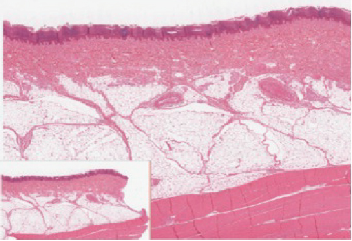
Figure 5.4 If you zoom on the cells at the outermost layer of this section of skin, what do you notice about the cells?

Figure 5.4 Epidermis The epidermis is epithelium composed of multiple layers of cells. The basal layer consists of cuboidal cells, whereas the outer layers are squamous, keratinized cells, so the whole epithelium is often described as being keratinized stratified squamous epithelium. LM × 40. (Micrograph provided by the Regents of University of Michigan Medical School © 2012)
Trending nowThis is a popular solution!

Chapter 5 Solutions
Anatomy & Physiology
Additional Science Textbook Solutions
College Physics
Campbell Biology (10th Edition)
Campbell Essential Biology (6th Edition) - standalone book
Campbell Essential Biology with Physiology (5th Edition)
Microbiology: An Introduction
Genetic Analysis: An Integrated Approach (2nd Edition)
- What are some functions of skin?arrow_forwardOne of the functions of the integumentary system is protection. Which of the following does not directly contribute to that function? stratum lucidum desmosomes folic acid synthesis Merkel cellsarrow_forwardThe connective tissue that composes the dermis is Multiple Choice dense regular connective. elastic connective. elastic cartilage. dense irregular connective.arrow_forward
- . The layer of epidermal cells containsolder keratinized cells and dead cells. a. stratum corneumb. stratum granulosumc. stratum spinosumd. stratum basalearrow_forwardCell division occurs in which layer of the epidermis? A. Stratum granulosum B. Stratum lucidum C. Stratum corneum D. Stratum basalearrow_forwardA skin Cancer of the stratum ( keratinocyte cell line ) in the epidermis would be?arrow_forward
- which of the following types of collagen form bundles in the reticular layer of the skin a. type 1 b. type 2 c. type 3 d. type 4arrow_forwardOne of the many functions of the integumentary system is protection. Describe two ways that the integumentary system is protective (i.e., what it protects against and how).arrow_forwardThe papillary layer of the dermis is most closelyassociated with which layer of the epidermis?a. stratum spinosumb. stratum corneumc. stratum granulosumd. stratum basalearrow_forward
 Human Physiology: From Cells to Systems (MindTap ...BiologyISBN:9781285866932Author:Lauralee SherwoodPublisher:Cengage Learning
Human Physiology: From Cells to Systems (MindTap ...BiologyISBN:9781285866932Author:Lauralee SherwoodPublisher:Cengage Learning Anatomy & PhysiologyBiologyISBN:9781938168130Author:Kelly A. Young, James A. Wise, Peter DeSaix, Dean H. Kruse, Brandon Poe, Eddie Johnson, Jody E. Johnson, Oksana Korol, J. Gordon Betts, Mark WomblePublisher:OpenStax College
Anatomy & PhysiologyBiologyISBN:9781938168130Author:Kelly A. Young, James A. Wise, Peter DeSaix, Dean H. Kruse, Brandon Poe, Eddie Johnson, Jody E. Johnson, Oksana Korol, J. Gordon Betts, Mark WomblePublisher:OpenStax College Human Biology (MindTap Course List)BiologyISBN:9781305112100Author:Cecie Starr, Beverly McMillanPublisher:Cengage Learning
Human Biology (MindTap Course List)BiologyISBN:9781305112100Author:Cecie Starr, Beverly McMillanPublisher:Cengage Learning





